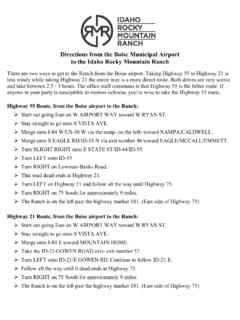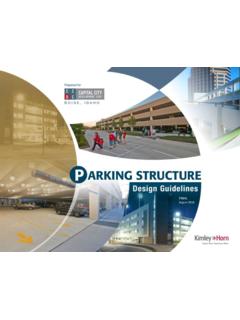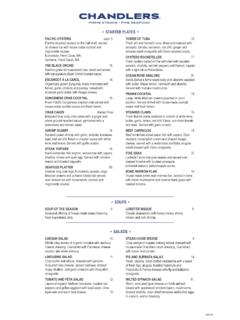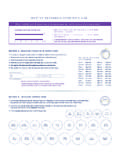Transcription of Copyright © 2002, All Rights Reserved
1 UNDERSTANDING ALGEBRA JAMES BRENNAN Copyright 2002, All Rights Reserved CONTENTS CHAPTER 1: THE NUMBERS OF ARITHMETIC 1 THE REAL NUMBER SYSTEM 1 ADDITION AND SUBTRACTION OF REAL NUMBERS 8 MULTIPLICATION AND DIVISION 11 POSITIVE INTEGER EXPONENTS 16 ORDER OF OPERATIONS
2 17 FRACTIONS 19 DECIMALS 25 PERCENTS 32 PROPERTIES OF REAL NUMBERS 38 CHAPTER 2: INTRODUCTION TO ALGEBRA 41 ALGEBRAIC EXPRESSIONS 41 SIMPLIFYING ALGEBRAIC EXPRESSIONS 42 SOLUTIONS OF ALGEBRAIC EQUATIONS 45 ADDITION PRINCIPLE 46 MULTIPLICATION PRINCIPLE
3 49 USING THE PRINCIPLES TOGETHER 50 CHAPTER 3: WORD PROBLEMS 53 PROBLEM SOLVING STRATEGIES 53 WORDS FOR OPERATIONS 55 GENERAL WORD PROBLEMS 56 CHAPTER 4.
4 GRAPHING AND STRAIGHT LINES 59 RECTANGULAR COORDINATES 59 GRAPHING FUNCTIONS 62 STRAIGHT LINES 64 CHAPTER 5: SYSTEMS OF LINEAR EQUATIONS 73 THE SOLUTIONS OF A SYSTEM OF EQUATIONS 73 ADDITION METHOD 76 SUBSTITUTION METHOD 79 CHAPTER 6.
5 POLYNOMIALS 81 POLYNOMIALS 81 FACTORING POLYNOMIALS 87 CHAPTER 7: RATIONAL EXPRESSIONS 97 RATIONAL EXPRESSIONS 97 SIMPLIFYING RATIONAL EXPRESSIONS 99 CHAPTER 8.
6 EXPONENTS AND ROOTS 105 EXPONENTS 105 ROOTS 107 SIMPLIFYING RADICAL EXPRESSIONS 110 RATIONALIZING THE DENOMINATOR 111 CHAPTER 9: QUADRATIC EQUATIONS 113 QUADRATIC EQUATIONS 113 SOLVING BY SQUARE ROOTS 114 SOLVING BY FACTORING 115 COMPLETING THE SQUARE 117 THE QUADRATIC FORMULA
7 119 INDEX 121 v FORWARD This is the print version of my Algebra website, currently located at , as of January 2002. I offer it in the hope that it will help someone to understand the concepts of algebra. I make no guarantee that this work is free from errors, in fact it is quite likely that I have goofed up an example or two. Please feel free to point out any errors you find. You may contact the author by emailing James Brennan January 13, 2002 Boise, Idaho 1 Chapter 1: The Numbers of Arithmetic THE REAL NUMBER SYSTEM The real number system evolved over time by expanding the notion of what we mean by the word number.
8 At first, number meant something you could count, like how many sheep a farmer owns. These are called the natural numbers, or sometimes the counting numbers. NATURAL NUMBERS or Counting Numbers 1, 2, 3, 4, 5, .. The use of three dots at the end of the list is a common mathematical notation to indicate that the list keeps going forever. At some point, the idea of zero came to be considered as a number. If the farmer does not have any sheep, then the number of sheep that the farmer owns is zero. We call the set of natural numbers plus the number zero the whole numbers. WHOLE NUMBERS Natural Numbers together with zero 0, 1, 2, 3, 4, 5, .. About the Number Zero What is zero? Is it a number? How can the number of nothing be a number?
9 Is zero nothing, or is it something? Well, before this starts to sound like a Zen koan, let s look at how we use the numeral 0. Arab and Indian scholars were the first to use zero to develop the place-value number system that we use today. When we write a number, we use only the ten numerals 0, 1, 2, 3, 4, 5, 6, 7, 8, and 9. These numerals can stand for ones, tens, hundreds, or whatever depending on their position in the number. In Chapter 1: The Numbers of Arithmetic 2order for this to work, we have to have a way to mark an empty place in a number, or the place values won t come out right. This is what the numeral 0 does. Think of it as an empty container, signifying that that place is empty. For example, the number 302 has 3 hundreds, no tens, and 2 ones.
10 So is zero a number? Well, that is a matter of definition, but in mathematics we tend to call it a duck if it acts like a duck, or at least if it s behavior is mostly duck-like. The number zero obeys most of the same rules of arithmetic that ordinary numbers do, so we call it a number. It is a rather special number, though, because it doesn t quite obey all the same laws as other numbers you can t divide by zero, for example. Note for math purists: In the strict axiomatic field development of the real numbers, both 0 and 1 are singled out for special treatment. Zero is the additive identity, because adding zero to a number does not change the number. Similarly, 1 is the multiplicative identity because multiplying a number by 1 does not change it. Even more abstract than zero is the idea of negative numbers.






